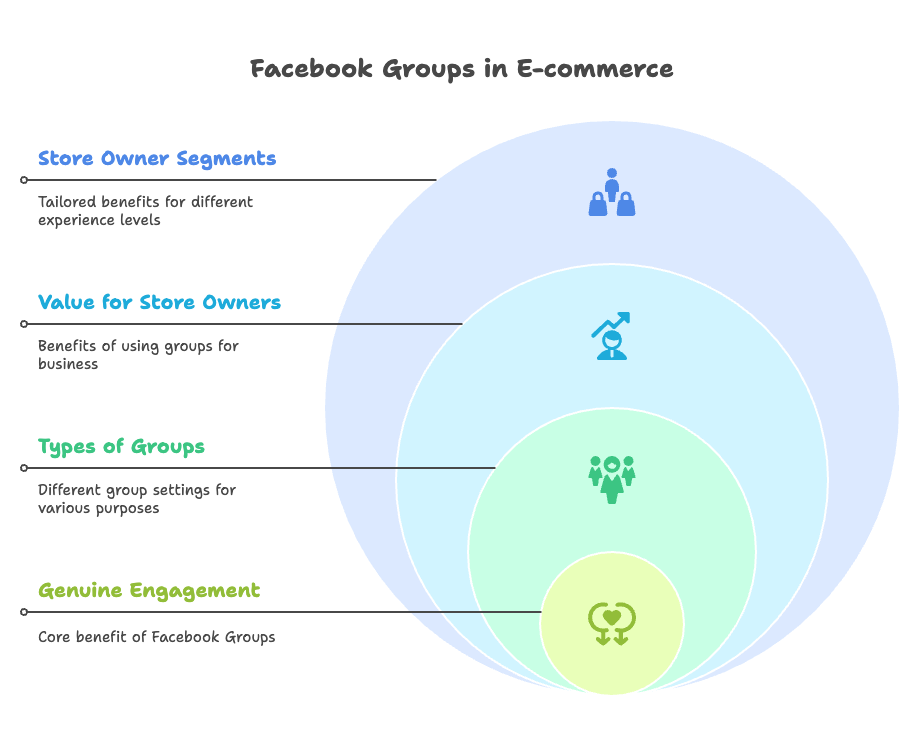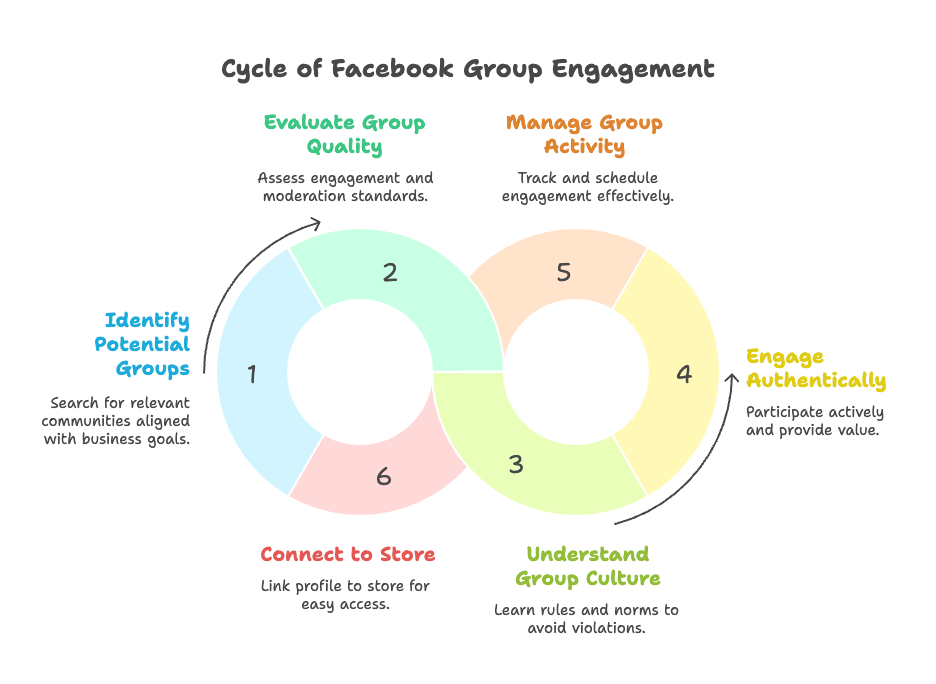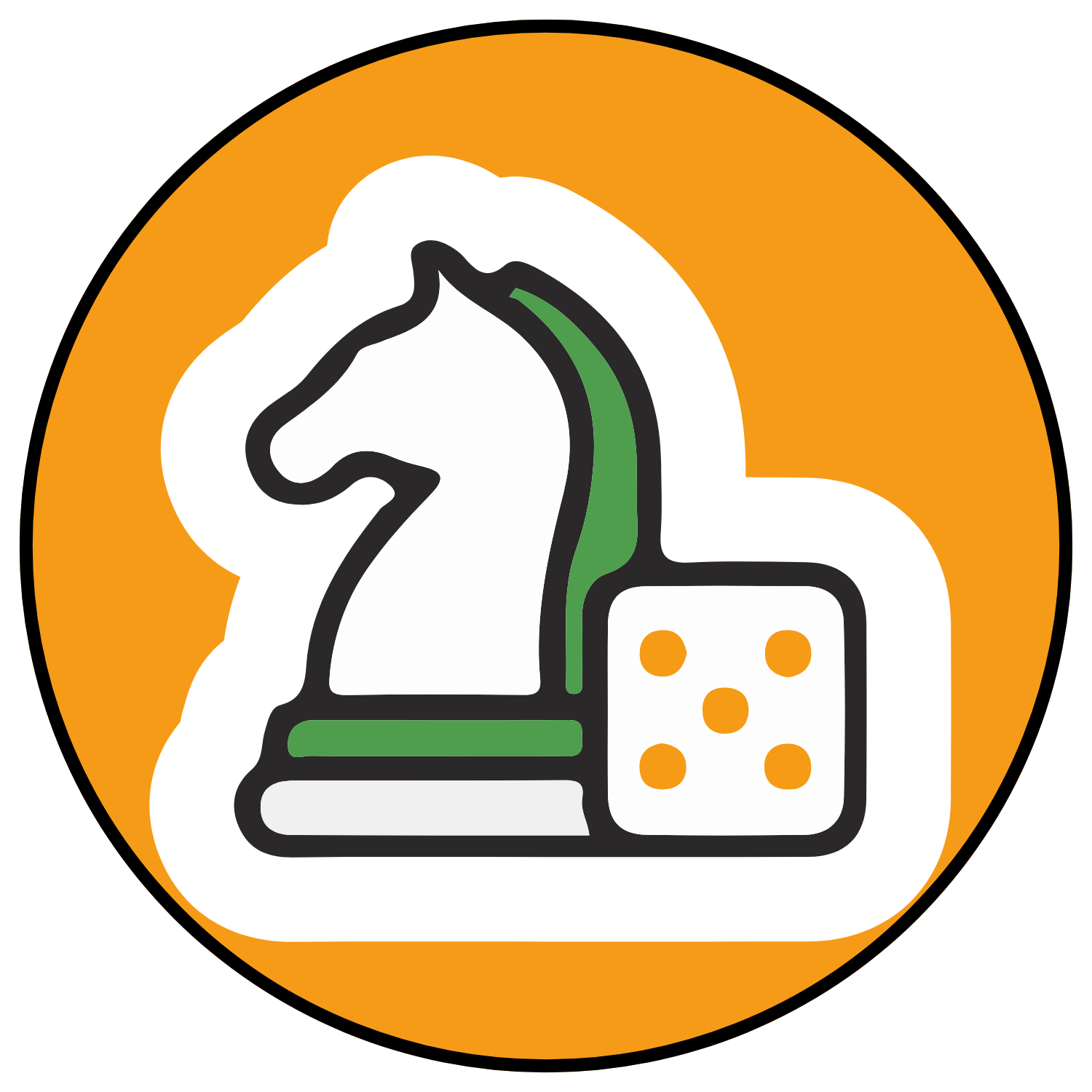Picture this: You’re scrolling through Facebook when you stumble upon a vibrant community where Shopify store owners are sharing their biggest wins, asking for genuine advice, and building relationships that translate into real sales. Welcome to the world of Facebook Groups – your untapped goldmine for community-driven growth.
While everyone else is throwing money at Facebook ads and hoping for the best, savvy Shopify entrepreneurs are building authentic connections in Groups that lead to loyal customers, valuable partnerships, and sustainable revenue growth. The secret? It’s not about pitching your products to strangers. It’s about becoming a trusted member of communities where your ideal customers already spend their time.
In this comprehensive guide, you’ll discover how to leverage Facebook Groups to build genuine relationships, drive targeted traffic to your Shopify store, and create a community that becomes your most powerful marketing asset. Whether you’re just launching your first store or scaling to multiple seven figures, there’s a Facebook Groups strategy that can transform your business.
Understanding Facebook Groups and Their Role in E-commerce

What Are Facebook Groups?
Facebook Groups aren’t just another social media feature – they’re digital communities where people gather around shared interests, challenges, and goals. Unlike Facebook Pages, which broadcast information to followers, Groups foster two-way conversations and peer-to-peer connections that feel authentic and valuable.
You’ll encounter three main types of Groups: public groups that anyone can find and join, private groups that require approval to join, and secret groups that are completely hidden from search. Each serves different purposes in your marketing strategy.
Here’s where it gets interesting for Shopify store owners. Groups create an environment where social proof happens naturally. When a satisfied customer raves about your product in a Group, it carries more weight than any paid advertisement ever could. That’s the power of peer recommendation – and it’s exactly what your store needs to stand out in a crowded marketplace.
The distinction between Groups, Pages, and Facebook Shops is crucial. While Pages are perfect for broadcasting your brand message and Shops handle transactions, Groups build the relationships that make everything else work. Think of Groups as the community center where your customers become your advocates.
The Value Proposition for Store Owners
Why should you invest time in Facebook Groups when you could be optimizing ad campaigns or tweaking your product pages? Because Groups offer something that traditional marketing channels can’t: genuine engagement with your ideal customers in their natural habitat.
In Groups, you gain access to unfiltered feedback about your products, industry trends, and customer pain points. It’s like having a focus group that runs 24/7, populated by people who actually want to help you succeed. This insight is invaluable for product development, marketing messaging, and understanding what truly motivates your target audience to buy.
But perhaps most importantly, Groups allow you to build trust before you ever ask for a sale. When you consistently provide value, answer questions, and support fellow entrepreneurs, you create a reputation that translates into customer loyalty and word-of-mouth referrals that money can’t buy.
Shopify Store Owner Segments & Group Fit
Starter & Beginner store owners will find Groups particularly valuable for learning the ropes. These communities are filled with experienced merchants who’ve already made the mistakes you’re trying to avoid. You’ll discover which apps actually work, which marketing strategies deliver results, and how to solve common problems before they derail your progress.
For Intermediate & Advanced store owners, Groups offer opportunities to establish thought leadership and build strategic partnerships. By sharing your expertise and insights, you position yourself as an authority in your niche while creating networking opportunities that can lead to collaborations, joint ventures, and new revenue streams.
Finding and Joining the Right Facebook Groups

Curating High-Value Groups
Not all Facebook Groups are created equal. Your success depends on finding communities that are actively moderated, consistently engaged, and aligned with your business goals. Start by searching for established e-commerce communities like Shopify Entrepreneurs, Shopify Mastermind, and Shopifyholic Hub – these Groups have proven track records and engaged member bases.
When evaluating potential Groups, look for these quality indicators: regular posts from multiple members, active discussions in the comments, and clear moderation that keeps spam and low-quality content to a minimum. A Group with 50,000 inactive members is far less valuable than one with 5,000 engaged participants who actually help each other.
Don’t overlook niche and local communities. These smaller Groups often provide more targeted opportunities to connect with your specific audience. If you sell baby products, joining parenting Groups in your target regions can be more effective than participating in general e-commerce communities.
Buy & sell Groups deserve special attention. These communities are specifically designed for members to promote products and make purchases. While they require a more direct sales approach, they can generate immediate revenue when used strategically.
Assessing Group Rules and Culture
Before you post anything in a new Group, spend time understanding its culture and rules. Some Groups have specific days for promotional content, while others integrate promotion naturally into helpful discussions. Violating these norms won’t just get your posts deleted – it can get you banned and damage your reputation.
Read the pinned posts, review recent discussions, and observe how successful members contribute. Are they leading with value and mentioning their businesses organically? Or do they participate in designated promotional threads? Understanding these nuances will determine your success or failure in each community.
Tools and Systems for Group Management
As you join multiple Groups, organization becomes crucial. Create a simple spreadsheet tracking each Group’s name, posting rules, promotional guidelines, and your last activity date. This prevents you from accidentally breaking rules or neglecting valuable communities.
Consider using scheduling tools to maintain consistent engagement across multiple Groups. However, be cautious with automated posting – Groups value authentic interaction, and members can usually spot generic, scheduled content from a mile away.
Make sure your Facebook profile clearly links to your Shopify store and includes relevant business information. When you provide valuable insights in Groups, interested members should be able to find your store easily. This connection should feel natural, not forced.
Engaging Authentically and Driving Community Value
Providing Help, Not Just Ads
The golden rule of Facebook Groups is simple: give value first, promote second. Follow the 80/20 rule – 80% of your contributions should focus on helping others, sharing insights, and building relationships. Only 20% should involve any form of promotion.
When someone asks about conversion rate optimization, don’t just drop a link to your store. Share specific tactics that have worked for you, explain why they’re effective, and offer to help with implementation. If your expertise naturally connects to your products or services, mention them as part of your helpful response, not as the main focus.
This approach transforms you from a seller into a trusted advisor. Members begin to recognize your expertise and seek out your opinions. When they’re ready to buy products in your category, guess whose store they’ll visit first?
Building Relationships and Networks
Facebook Groups aren’t just about finding customers – they’re about building a network of fellow entrepreneurs, service providers, and industry experts who can accelerate your growth in unexpected ways.
That app developer who’s always sharing helpful tips? They might become your technical partner. The successful store owner who gives great advice? They could be your next collaboration partner or mentor. The marketing expert who answers everyone’s questions? They might join your team as your business grows.
Invest time in building genuine relationships. Comment thoughtfully on others’ posts, offer encouragement during challenging times, and celebrate successes. These connections often become more valuable than any direct sales you might generate.
Advanced Engagement Tactics
Once you’ve established yourself as a valuable community member, you can employ more sophisticated tactics to drive engagement and showcase your expertise.
Use polls and questions to gather market research while providing value. Ask about pain points in your industry, favorite tools, or upcoming trends. The responses give you insight into your target market while positioning you as someone who cares about the community’s needs.
Consider hosting live videos or AMAs (Ask Me Anything) sessions when appropriate. These formats allow you to share your expertise in real-time while building stronger personal connections with community members.
Practice social listening by monitoring Group conversations for emerging trends, common complaints, and unmet needs. This intelligence can inform your product development, content strategy, and marketing messaging.
Building and Managing Your Own Facebook Group
Deciding When to Launch a Group
Creating your own Facebook Group represents a significant step in your community-building strategy. But timing matters. You’ll want to have established a loyal customer base and a clear understanding of what unique value your Group will provide.
The ideal time to launch is when you notice customers asking similar questions, expressing interest in connecting with each other, or requesting ongoing support and education. Your Group should serve a specific need that existing communities aren’t addressing.
Consider your bandwidth carefully. A successful Group requires consistent moderation, content creation, and member engagement. It’s better to be an active participant in existing Groups than to create a ghost town that reflects poorly on your brand.
Group Setup and Growth Steps
Start with a clear, SEO-friendly name that immediately communicates your Group’s purpose and target audience. “Sustainable Fashion Entrepreneurs” is far more effective than “Sarah’s Business Group.” Your name should help potential members find you organically.
Create comprehensive rules that set expectations for behavior, promotional content, and community standards. Use welcome posts and entry questions to filter for engaged members who align with your Group’s mission.
Seed your Group with valuable content before inviting members. Potential participants should see an active, valuable community, not an empty space waiting for them to fill it. Plan several weeks’ worth of discussion starters, helpful resources, and engaging questions.
Invite your most engaged customers, email subscribers, and industry contacts to join as founding members. These early adopters will help establish the culture and provide social proof for future members.
Integrating Shopify Workflows
Your Group shouldn’t exist in isolation from your Shopify store – it should enhance and support your business goals. Share behind-the-scenes content, product development updates, and exclusive previews that make members feel like insiders.
Use your Group to gather feedback on new products, test marketing messages, and identify customer pain points that your products could address. This direct line to your target market is invaluable for making data-driven business decisions.
Consider offering Group-exclusive discounts, early access to new products, or special customer service channels. These perks increase the perceived value of membership while driving sales through your Shopify store.
Converting Engagement Into Sales: Practical Shopify Tactics
Driving Traffic from Groups to Store
Converting Group engagement into Shopify sales requires subtlety and strategy. The hard sell doesn’t work in community environments – you need to create natural pathways from Group interactions to your store.
When sharing helpful content or answering questions, include relevant links to detailed blog posts or resources on your website. These provide additional value while introducing visitors to your brand ecosystem. Make sure your website prominently displays your products and includes clear calls-to-action.
Use UTM parameters to track which Groups drive the most valuable traffic to your store. This data helps you focus your efforts on the communities that generate the best return on your time investment.
Share authentic product stories and customer testimonials that naturally showcase your offerings. Instead of posting “Check out our new collection,” share the story behind a particular product’s development or highlight how it solved a real customer problem.
Sell-Through Mechanisms
In buy & sell Groups, you can be more direct with your sales approach. Create compelling product posts with high-quality images, detailed descriptions, and clear pricing. Include your Shopify store link for easy purchasing, but be prepared to handle questions and negotiations in the comments.
Leverage Facebook Shops integration to enable seamless purchasing without leaving Facebook. When potential customers can buy instantly through Facebook’s native checkout, you reduce friction and increase conversion rates.
Consider running Group-exclusive flash sales or limited-time offers. These create urgency while rewarding community members for their engagement and loyalty.
Measuring Success & Iterating
Track your Group activities’ impact on your Shopify store using analytics tools and UTM parameters. Monitor key metrics like traffic from Facebook, conversion rates from Group referrals, and customer lifetime value of Group-acquired customers.
Pay attention to engagement metrics within Groups themselves. Are your posts generating comments and shares? Are members asking you questions or seeking your advice? These indicators show whether you’re building influence and authority within the community.
Continuously experiment with different content types, posting schedules, and engagement tactics. What works in one Group might not work in another, so adapt your approach based on each community’s unique culture and preferences.
Risks, Etiquette, and Legal Considerations
Group Etiquette and Best Practices
Your reputation in Facebook Groups directly impacts your business credibility. Always follow each Group’s specific rules about promotional content, and err on the side of being too helpful rather than too promotional.
Avoid spammy behavior like posting the same content across multiple Groups simultaneously or responding to every question with a sales pitch. These tactics get you banned quickly and damage your professional reputation.
When conflicts arise – and they will – handle them professionally and publicly. How you respond to criticism or disagreements becomes part of your brand story that other community members will remember.
Data Privacy and Community Safety
Respect the privacy of Group members and their shared information. Don’t screenshot private Group discussions for public use, and be mindful of confidential business information that members share in trusted community environments.
Follow Facebook’s community standards and advertising policies, even in Group settings. Violations can result in account restrictions that impact your entire social media marketing strategy.
Case Studies and Success Stories
Consider the journey of Maria, who launched her sustainable jewelry Shopify store with zero followers and a tiny marketing budget. Instead of spending money on ads, she joined 15 relevant Facebook Groups focused on sustainable fashion, handmade jewelry, and women entrepreneurs.
Maria spent 30 minutes each morning providing valuable insights, answering questions about sustainable materials, and sharing her expertise in ethical sourcing. She never directly promoted her products but included her store link in her profile and occasionally mentioned her business when relevant to discussions.
Within six months, Maria had built recognition as a sustainability expert across these communities. Group members began asking where they could buy ethical jewelry, leading to organic traffic and sales. Her biggest breakthrough came when another Group member shared Maria’s story about ethical sourcing, generating 500 website visits and $3,200 in sales in one week.
By year-end, Maria’s Group-driven strategy had generated over $45,000 in revenue – all from authentic relationship building and community engagement. More importantly, these customers became loyal advocates who continued buying and referring others.
On the branded Group side, consider how successful Shopify entrepreneurs have built communities around their expertise rather than their products. These Groups become powerful lead magnets, customer service channels, and market research tools that support multiple revenue streams.
Conclusion and Next Steps
Facebook Groups represent one of the most underutilized growth channels available to Shopify store owners. While your competitors focus on paid advertising and social media broadcasting, you can build genuine relationships that translate into loyal customers, valuable partnerships, and sustainable revenue growth.
Success in Groups isn’t about quick wins or viral posts. It’s about consistently showing up, providing value, and building trust within communities where your ideal customers already spend their time. This approach takes patience, but the results compound over time in ways that paid advertising simply cannot match.
Start small. Join 3-5 high-quality Groups that align with your target audience and business goals. Commit to providing value for 30 days before promoting anything. Track which activities drive traffic and sales to your Shopify store, then double down on what works while eliminating what doesn’t.
Remember: your goal isn’t to sell to everyone in every Group. Your goal is to become a trusted, valuable member of communities where your ideal customers naturally gather. When you achieve that, the sales will follow organically.
The e-commerce landscape continues evolving, but the human need for authentic community remains constant. Facebook Groups give you the opportunity to build that community around your brand and expertise. The question isn’t whether this strategy will work – it’s whether you’ll commit to making it work for your business.
References
- Shopify Partners Blog. “Starting a Facebook Group: How to Build an Online Community to Grow Your Business.” Shopify. https://www.shopify.com/partners/blog/starting-a-facebook-group
- Alinga. “Facebook Groups for Shopify: Marketing Tips.” Alinga. https://www.alinga.com.au/2020/11/03/facebook-groups-for-shopify-ecommerce/
- Neal Schaffer. “18 Ways How to Promote Your Shopify Store on Facebook.” Neal Schaffer. https://nealschaffer.com/shopify-facebook/
- Shopify Blog. “How To Sell on Facebook: A Beginner’s Guide for 2025.” Shopify. https://www.shopify.com/blog/sell-on-facebook
Ready to supercharge your Shopify store’s community-building efforts with data-driven insights? Growth Suite is a Shopify app that tracks visitor behavior and predicts purchase intent, helping you understand exactly which marketing strategies drive the best results. Install it with a single click and start optimizing your Facebook Groups strategy with real customer data that shows what actually converts browsers into buyers!




